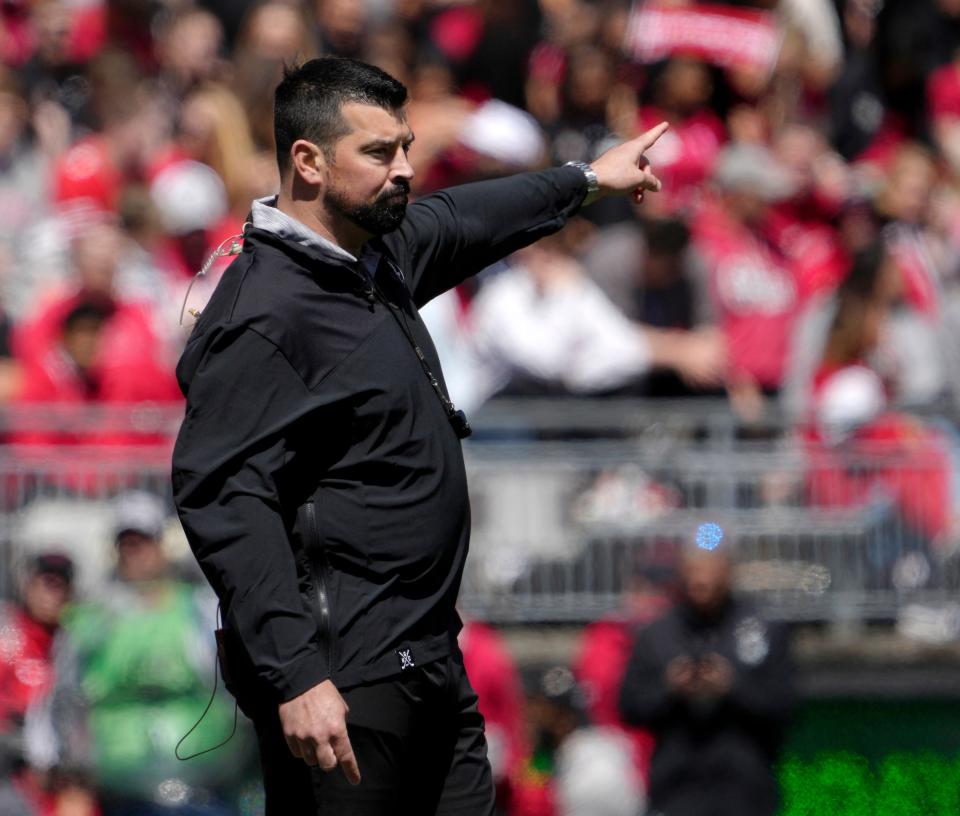Ohio State football coach Ryan Day supportive of proposed revenue sharing agreement
Ohio State football coach Ryan Day supports a proposed legal settlement that would allow universities to share millions of dollars in revenues with athletes starting as soon as next year.
The deal, which was reached on May 23 to resolve three antitrust lawsuits the NCAA faced over limits on compensating players, requires the association to pay nearly $2.8 billion in damages over a decade and establishes a model for revenue sharing moving forward, according to a letter sent by president Charlie Baker to member schools.
Terms of the settlement remain subject to approval by a federal judge later this year but would permit schools to allocate up to 22% of the average major conference institution’s annual revenue to its athletes. That figure is expected to be at least $20 million once the payments take effect in the 2025-26 academic year.

“There’s still a lot of things to be figured out, but we’re excited about it," said Day, who noted potential revenue sharing as good for college football on the whole.
How a school like Ohio State, which sponsors 36 varsity sports, as many as any in a power league, divides the spending cap among its athletes remains a bit murky, though.
Will the bulk of it go to players in football and men’s basketball, the sports that generate the majority of the athletic department’s operating revenues? Or will Title IX, the federal gender equity law that requires schools to dedicate equal resources to men’s and women’s sports, lead to equal distributions?
The question is perhaps the biggest confronting athletic departments, one that must be sorted out over the next 14 months.
As Day spoke with reporters before a luncheon at Vitria on the Square on Tuesday, there was not an immediate answer to how much his program might be able to provide to players.
“It’s still to be determined,” he said. “There’s a lot of things that need to be addressed, Title IX and a breakdown of how every school is going to handle it and how we’re going to handle it. We’re not there yet.”
More: Join the Ohio State Sports Insider text group with Bill Rabinowitz, Joey Kaufman Adam Jardy
Over the last decade, as revenues for athletic departments have continued to rise, schools have increasingly paid athletes more than the benefits of a scholarship.
That began in 2015 with stipends to cover the cost of attendance. It continued in 2021 with annual academic bonus payments up to $5,980 following a U.S. Supreme Court ruling. Ohio State began paying the bonuses in the fall 2022 semester.
But a significant amount of player compensation continues to come through name, image and likeness deals in which they are paid by third parties for the use of their NIL.
Addressing the benefits of potential revenue sharing in college football, Day mentioned it as a step that would allow schools to have a more direct role in paying players.
“There’s a lot of things now that are going to be institutionalized,” Day said, “which certainly does make things easier.”
Day added that booster groups known as collectives will remain “a big part of what we do.”
Between the 1870 Society and THE Foundation, there are at least two entities that actively support Ohio State’s football program, and their continued operations would mean more financial resources for the Buckeyes.
“We have to make sure that we find that balance,” Day said.
Joey Kaufman covers Ohio State football for The Columbus Dispatch and can be reached at jkaufman@dispatch.com.
Get more Ohio State football news by listening to our podcasts
This article originally appeared on The Columbus Dispatch: Ryan Day supportive of proposed college sports revenue sharing deal

